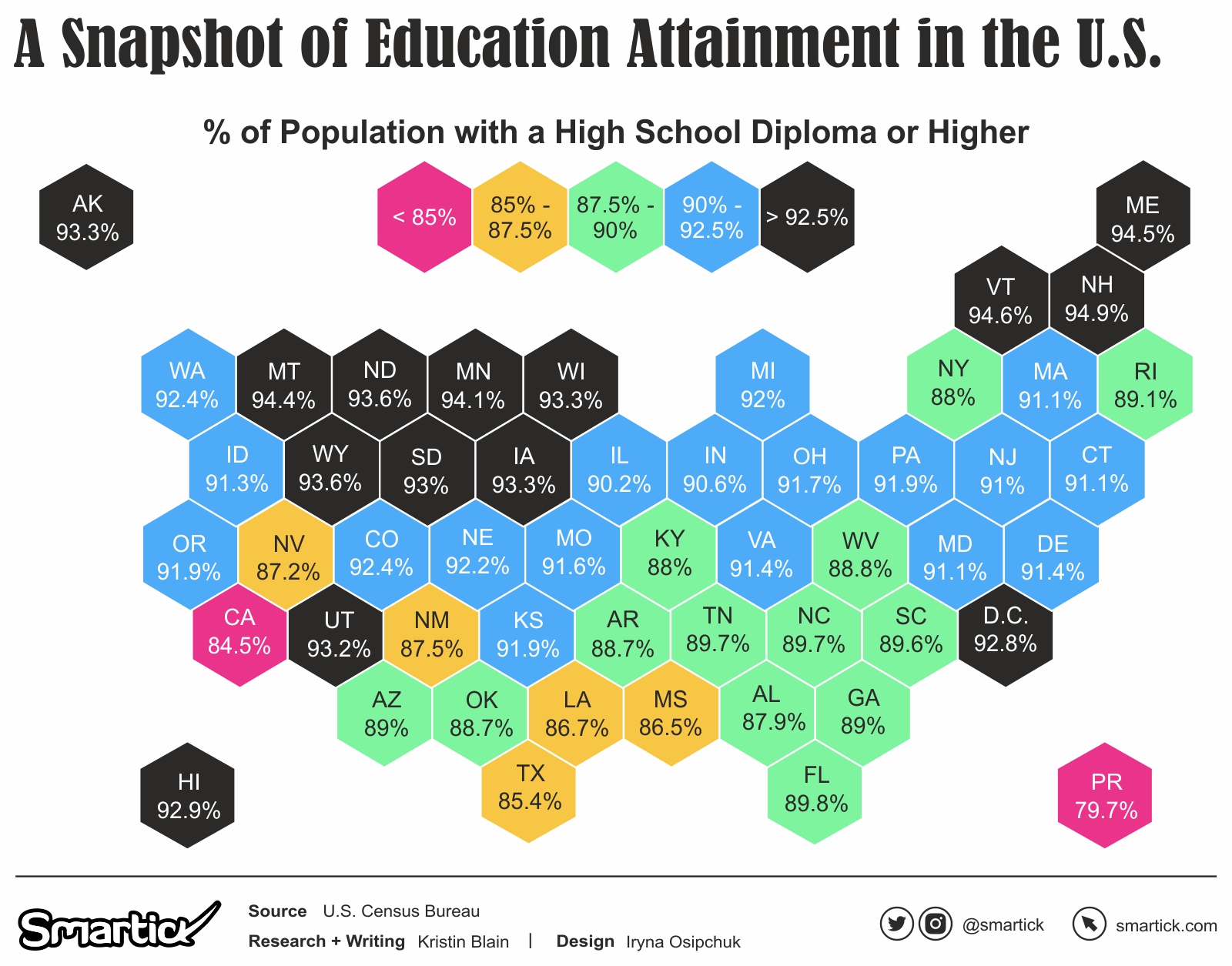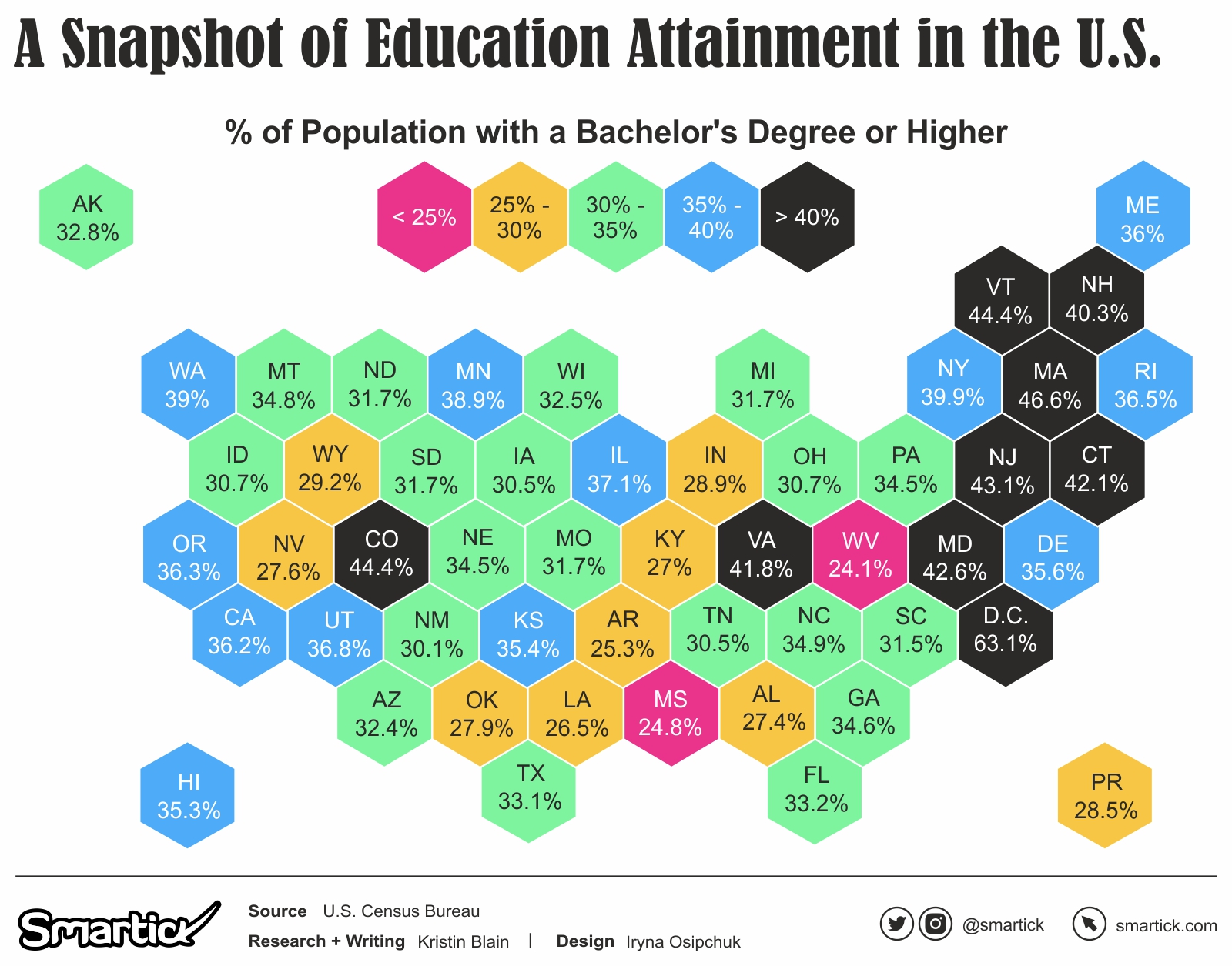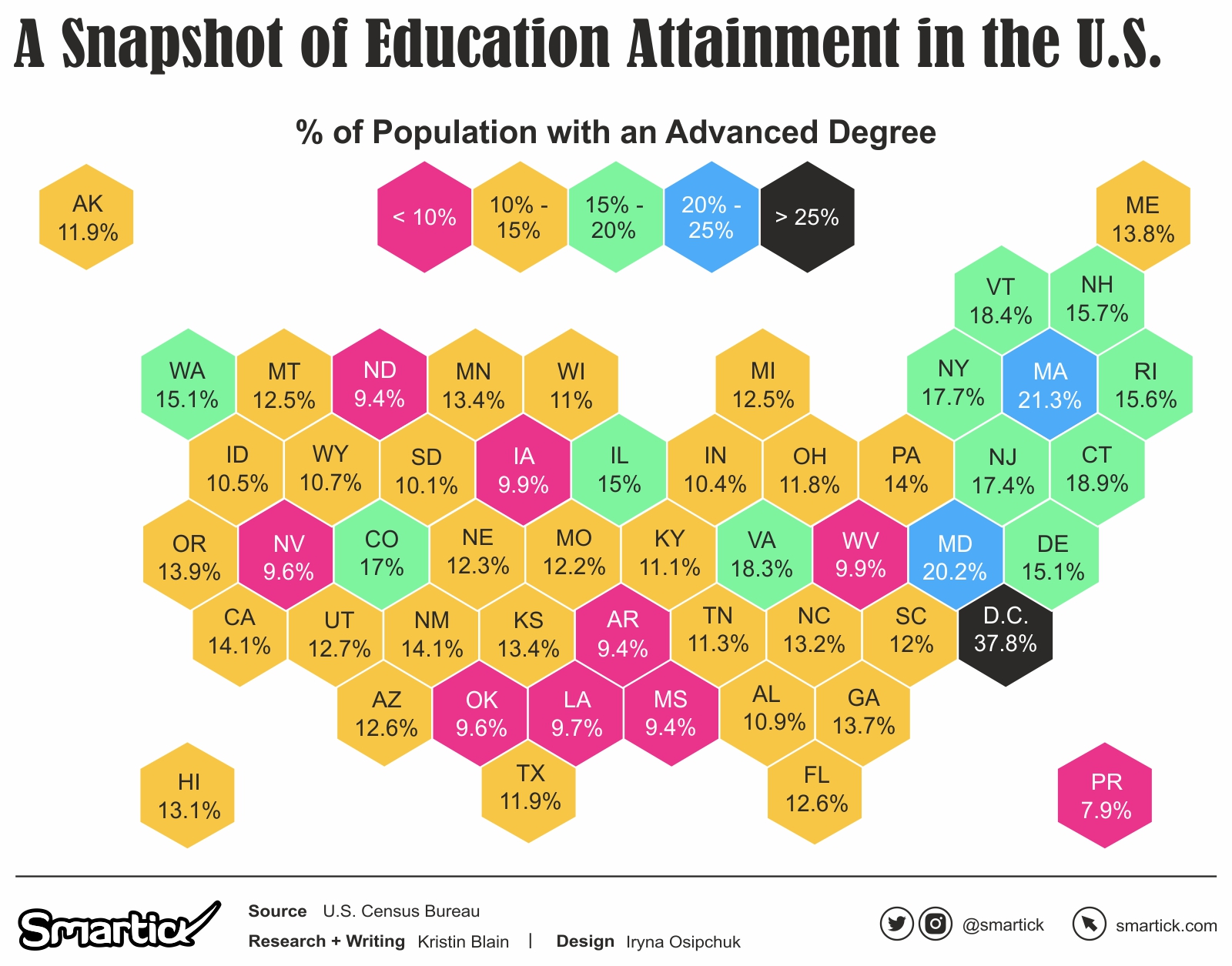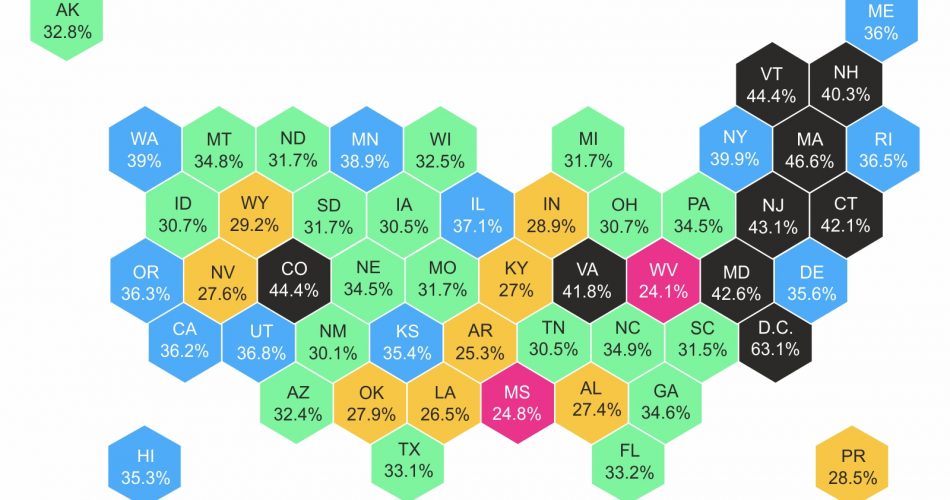
Education is a cornerstone of societal progress, empowering individuals and shaping their future. To gain a comprehensive understanding of educational achievements across the United States, we turn to the reliable data source provided by the U.S. Census Bureau’s American Community Survey in 2021.
Population with a High School Diploma or Higher
First, let’s examine the percentage of the population with a high school diploma or higher. A high school diploma is often considered the minimum requirement for various career paths, making it an essential educational milestone.

Highlights:
- Vermont takes the lead with an impressive 94.55% of its population holding a high school diploma or higher. It sets a strong example for educational attainment.
- Maine closely follows with a remarkable 94.53% of its population achieving this educational milestone. The state’s commitment to education is evident.
- New Hampshire secures the third position in education attainment with 94.44% of the population holding a high school diploma or higher.
- Puerto Rico has the lowest education attainment rate with only 79.65% of the population having a high school diploma or higher.
- California has the second lowest education attainment rate with 84.45% of the population holding a high school diploma or higher.
Population with a Bachelor’s Degree or Higher
Moving forward, let’s explore the percentage of the population with a bachelor’s degree or higher. A bachelor’s degree signifies higher education and often opens doors to advanced career opportunities and specialized fields.

Highlights:
- District of Columbia leads the list with an impressive 63.05% of individuals holding a Bachelor’s Degree or higher. The capital boasts the highest percentage of highly educated residents, reflecting a strong emphasis on education in the region.
- Massachusetts follows closely behind with 46.62% of its population holding a Bachelor’s Degree or higher. This showcases the state’s commitment to academic excellence and the presence of renowned universities like Harvard and MIT.
- Vermont secures the third position with 44.44% of its residents having attained a Bachelor’s Degree or higher. This indicates a significant investment in education within the state and highlights the value placed on higher learning.
- Mississippi has the second-lowest percentage of individuals with a Bachelor’s Degree or higher, with only 24.78% of its population meeting this criterion. This suggests a potential need for increased access to education and opportunities for higher learning within the state.
- West Virginia has the lowest percentage on the list, with just 24.12% of its residents holding a Bachelor’s Degree or higher. The state faces challenges in terms of educational attainment, and efforts to improve access to higher education may be beneficial for its residents.
Population with an Advanced Degree
Lastly, let’s delve into the percentage of the population with an advanced degree, such as a master’s or doctoral degree. Pursuing an advanced degree signifies expertise in a specialized field and often leads to leadership positions, advanced research opportunities, and academic careers.

Highlights:
- With an Advanced Degree rate of 37.82%, the District of Columbia has the highest percentage among the states listed.
- Massachusetts closely follows with a remarkable 21.27% of its population holding an Advanced Degree.
- Maryland secures the third position with an Advanced Degree rate of 20.16%.
- Puerto Rico has the lowest education attainment rate with only 7.93% of the population having an advanced degree.
- Mississippi has the second lowest educational attainment rate with 9.35% of the population holding an Advanced Degree.
Education is a catalyst for personal growth and societal advancement. The U.S. Census Bureau’s American Community Survey provides valuable insights into educational attainment across the United States. From high school diplomas to advanced degrees, each milestone represents a stepping stone toward a brighter future. By understanding these educational achievements, policymakers, educators, and individuals can work together to create a more inclusive, equitable, and prosperous society for all. The data from the American Community Survey serves as a foundation for informed decision-making and initiatives aimed at promoting educational opportunities and success throughout the nation.

